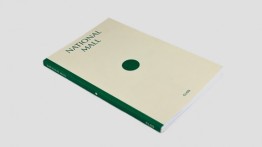The National Mall: A Panel Discussion
Friday, January 30, 2015, 7 - 9pm

A number of significant projects are underway on or near the National Mall - "America's Front Lawn." CLOG's fifth issue, CLOG : National Mall was an introduction to the history of the Mall, the intense design reviews, the act of memorializing, and some controversial proposed projects. Two years later we are revisiting the issue, showcasing several established firms currently working on or near the Mall. These firms will be discussing the challenges and opportunities of intervening in the design of a space that - perhaps more than any other - reflects what the nation was, is, and wants to be - the National Mall.
Welcome by Stephen Rustow, Museoplan
Moderated by Kyle May, CLOG
Co-presented by CLOG Journal and The Irwin S. Chanin School of Architecture
Free and open to the public | RSVP here
Located in the Frederick P. Rose Auditorium, at 41 Cooper Square (on Third Avenue between 6th and 7th Streets)




